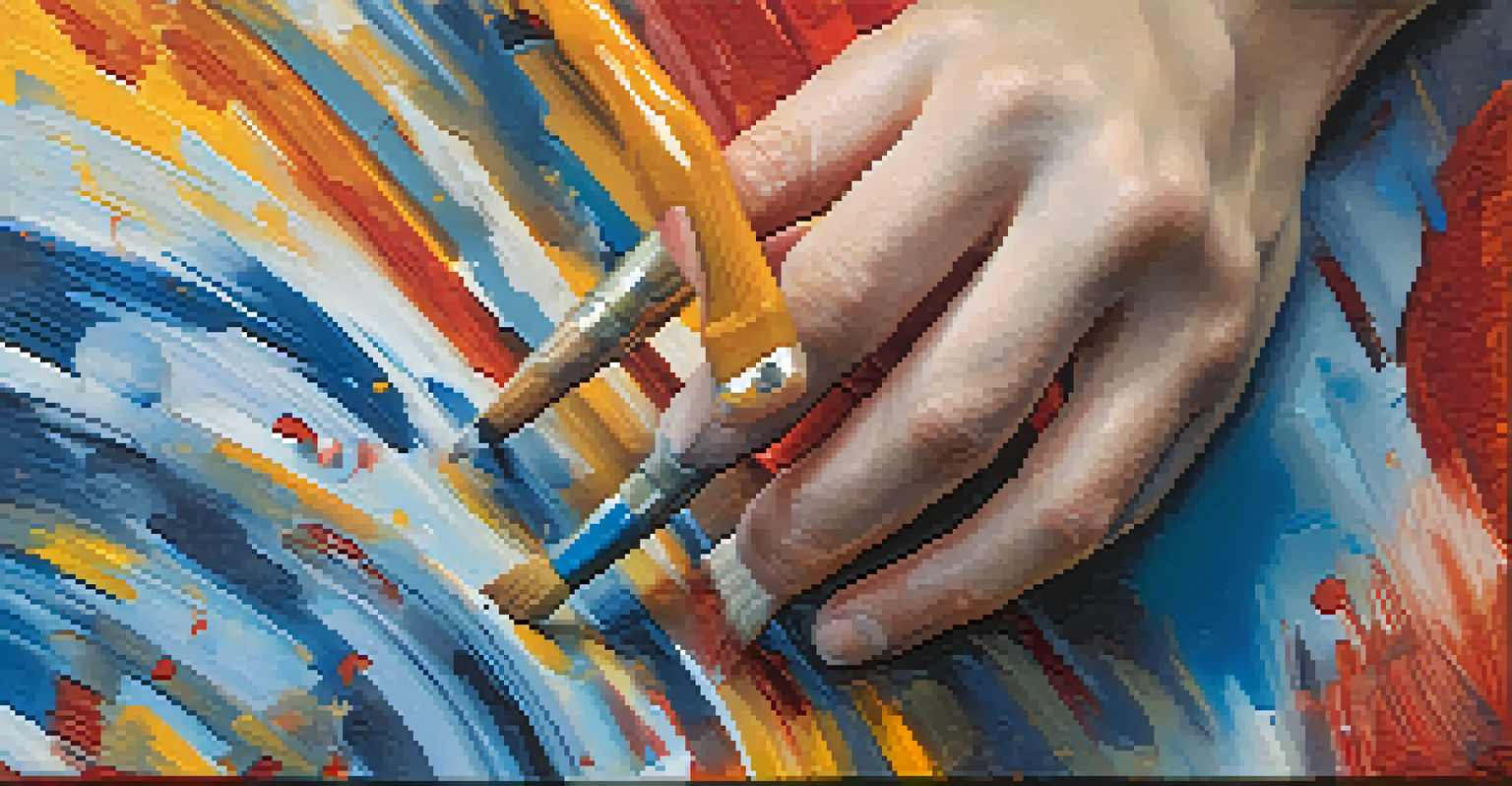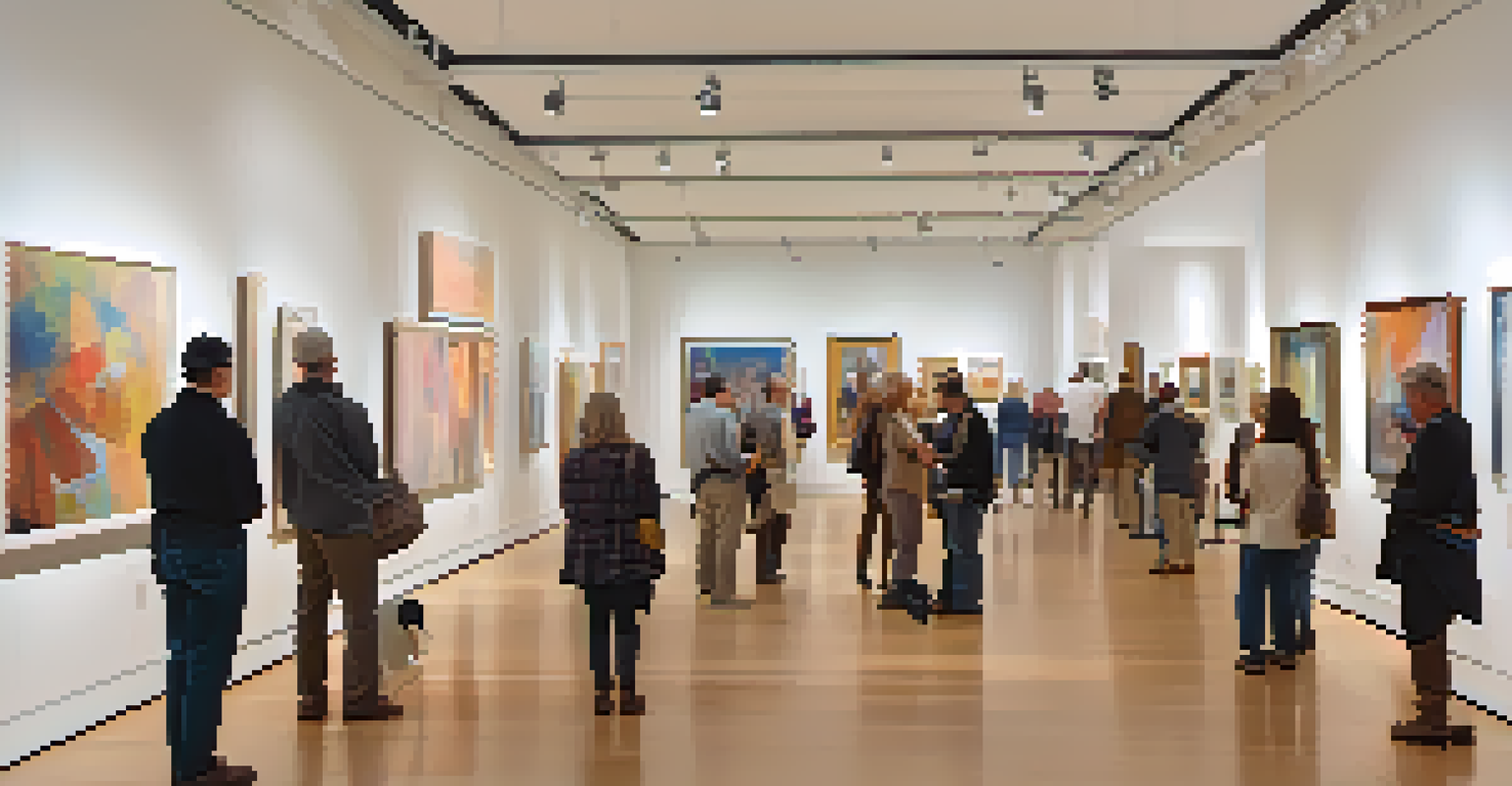Ethics of Art Critique: Balancing Honesty and Sensitivity

Understanding the Role of Art Critique in Society
Art critique serves a vital role in shaping the cultural landscape by providing insights and evaluations of artistic works. It helps artists grow, encourages public discourse, and fosters a deeper appreciation for art. However, the responsibility that comes with this role is significant, requiring critics to navigate the delicate balance between truth and the artist's feelings.
Art is not freedom from discipline, but disciplined freedom.
Critiques can influence an artist's career, affecting their confidence and future endeavors. When a critic delivers a harsh review, it can discourage creativity and stifle artistic expression. Therefore, understanding the societal impact of critique is essential for critics who want to contribute positively to the art community.
Ultimately, the goal of art critique should be to uplift and inform, offering constructive feedback rather than simply tearing down an artist's work. This balance is crucial for fostering a healthy artistic environment where both critics and artists can thrive.
The Importance of Honesty in Art Critique
Honesty is a cornerstone of effective art critique. Critics must provide truthful evaluations to maintain credibility and help artists improve their craft. However, honesty should not be weaponized; rather, it should serve as a tool for growth and understanding.

When critiques are honest, they can lead to deeper discussions about art and its various interpretations. This openness encourages artists to reflect on their work, pushing them to explore new ideas and techniques. A well-articulated critique can spark inspiration, allowing artists to evolve and innovate.
Art Critique Shapes Cultural Growth
Art critique provides essential insights and evaluations that help artists grow and foster public discourse.
However, the challenge lies in delivering honesty without harming the artist's emotional state. It's essential for critics to find a way to express their thoughts candidly while considering the artist's perspective, creating a dialogue rather than a monologue.
The Need for Sensitivity in Critique
While honesty is crucial, sensitivity in critique is equally important. Art is often deeply personal, reflecting the artist's emotions, experiences, and vulnerabilities. Recognizing this, critics must approach their evaluations with empathy and understanding.
Every artist was first an amateur.
A sensitive critique acknowledges the effort and intention behind the artwork, even if the final product falls short of expectations. By framing feedback in a way that highlights strengths alongside areas for improvement, critics can create a supportive environment that encourages artists to persevere.
Moreover, sensitivity can bridge the gap between criticism and appreciation, fostering a more constructive dialogue. This approach not only benefits the artist but also enriches the audience's experience, as they can engage with the artwork on a deeper level.
Finding the Balance: Honesty vs. Sensitivity
Striking the right balance between honesty and sensitivity is the crux of ethical art critique. Critics must navigate the fine line where truthful feedback meets compassionate understanding. This delicate balance can be achieved through careful word choice and constructive framing.
For instance, instead of simply stating that a piece lacks depth, a critic might say, 'While the concept is intriguing, exploring the theme further could enhance the emotional impact.' This approach maintains honesty while also encouraging the artist to reflect and improve.
Balance Honesty with Sensitivity
Critics must deliver honest feedback while being sensitive to the emotional aspects of the artist's work.
Ultimately, achieving this balance requires practice and self-awareness. Critics should continuously assess their own biases and motivations, ensuring that their critiques are rooted in a genuine desire to support and uplift the artist.
The Role of Language in Art Critique
Language plays a pivotal role in how critiques are perceived. The words chosen can either inspire or discourage an artist. Critics should be mindful of their language, opting for phrases that convey respect and consideration, while still delivering honest assessments.
Using descriptive language that focuses on specific aspects of the artwork can help provide clarity without being overly harsh. For example, discussing color use, composition, or thematic elements can lead to a more constructive dialogue that benefits both parties.
Additionally, employing a tone that reflects understanding and appreciation can foster a positive atmosphere. Critics should aim to create a space where artists feel valued and encouraged, rather than judged or dismissed.
The Impact of Cultural Context on Critique
Cultural context plays a significant role in art critique, influencing both the artist's intentions and the audience's interpretations. Critics must consider the cultural background and societal norms surrounding a piece when delivering their evaluations. This awareness can help prevent misunderstandings and promote a more nuanced discussion.
For instance, an artwork addressing social issues may resonate differently with various audiences, depending on their own experiences and perspectives. Critics who recognize these differences can provide more insightful and relevant critiques that honor the diversity of thought and expression within the art world.
Cultural Context Enriches Critique
Understanding cultural context enhances the critique process, promoting empathy and inclusivity in art discussions.
Moreover, being sensitive to cultural context allows critics to approach their evaluations with greater empathy, acknowledging the unique challenges artists may face in their work. This approach not only enriches the critique but also promotes inclusivity in the art community.
Building a Supportive Art Community through Critique
At its best, art critique can foster a supportive community where artists and critics collaborate to enhance creativity and understanding. By focusing on the shared goal of artistic growth, both parties can engage in meaningful exchanges that elevate the experience of creating and appreciating art.
Critics can play a crucial role in building this community by offering mentorship and guidance, especially to emerging artists. Providing constructive feedback and encouraging dialogue can help nurture new talent and inspire confidence in their abilities.

Ultimately, when honesty and sensitivity are prioritized, art critique becomes a powerful tool for connection and support. This ethical approach can lead to a more vibrant and dynamic art scene, where creativity flourishes and diverse voices are celebrated.